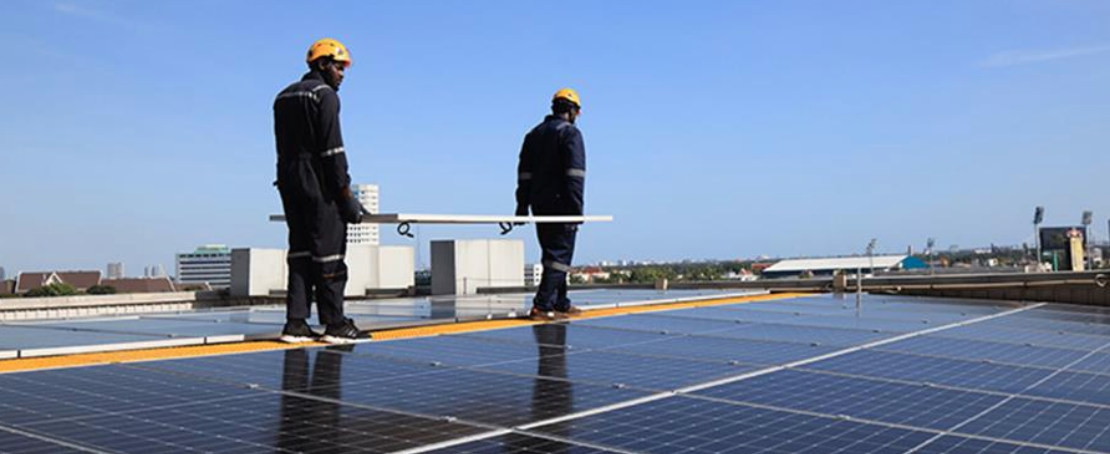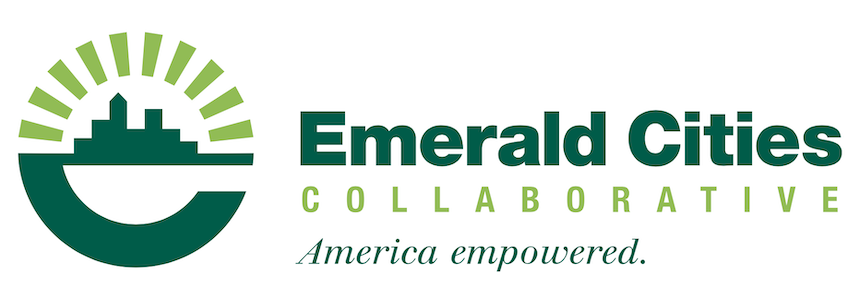Click to view the revised playbook and resources.
Our Mission
The Emerald Cities Collaborative (ECC) pursues a high-road approach to greening our cities, building resilient regional economies and strengthening our democracy. By building cross-sector collaborations, acutely focused on those historically left out of the economic and community development process, we help communities unleash their capacity to build high-road economies that are more sustainable, economically just and democratic.
Our Impact
System Reform
Program/Project Development
Community Impact

6 Title I High Schools
In South/Southeast Los Angeles County now have a community college STEAM experiential learning program spearheaded by ECC to create pathways for underrepresented students into architecture, engineering, construction, and environmental careers.
360 Title 1 high school students
Completed energy, green building courses and industry certifications
$250 B
Invested to develop high-road energy efficiency, water and solar projects thanks to ECC leadership. Includes 17 government buildings, two water infrastructure projects and over 20 affordable housing projects.
1 Place-based Community Resilience Project
Initiated and co-sponsor a multi-stakeholder collaborative to leverage the buying power of Anchor institutions with community assets to invest in community climate resilience initiatives.
$20 M
Sustainable food processing facility spearheaded by ECC in the San Francisco Bay Area will employ 150 local workers into union jobs and worker cooperative, and utilize Black and Brown urban growers as suppliers.
12 Community College Training Programs
In community organizing co-sponsored with the Community Learning Partnership preparing the next generation of community change agents through experiential learning and credentials.
80%
Of ECC projects pay union or prevailing wages.
$19 M
In energy efficiency, clean energy and green infrastructure contracts have been awarded to MWDBE contractors as a result of ECC leadership.
3 RENEW Affordable Housing Programs
Established to help affordable housing developers audit, finance, and retrofit their buildings to be energy and water efficient in San Francisco, Seattle and Boston.
260 MWDBE
Completed E-Contractor Academy
Energy & Water Equity Policies
Successfully passed In building electrification, building performance standards local, net metering, water affordability working in local and national coalitions
Our Impact

System Reform
Program/Project Development
Community Impact
6 Title I High Schools
In South/Southeast Los Angeles County now have a community college STEAM experiential learning program spearheaded by ECC to create pathways for underrepresented students into architecture, engineering, construction, and environmental careers.
$250 B
Invested to develop high-road energy efficiency, water and solar projects thanks to ECC leadership. Includes 17 government buildings, two water infrastructure projects and over 20 affordable housing projects.
$20 M
Sustainable food processing facility spearheaded by ECC in the San Francisco Bay Area will employ 150 local workers into union jobs and worker cooperative, and utilize Black and Brown urban growers as suppliers.
$19 M
In energy efficiency, clean energy and green infrastructure contracts have been awarded to MWDBE contractors as a result of ECC leadership.
260 MWDBE
Completed E-Contractor Academy
10 High Road Policies
Organized and implemented labor and community standards – community workforce agreements, community benefit agreements, local hire and local procurement – within public and private sector policies and projects in LA County, San Francisco, Oakland, Seattle, Portland, Chicago, Boston, and Cleveland/Cuyahoga County that connect hundreds of thousands low-income residents to high wage careers.
5 Contractor Training Programs
Custom designed and conduct 7-12 week green building training and coaching programs for small and minority, women, veteran and disadvantaged contractors in LA County, San Francisco, Seattle, Portland and Cleveland.
360 Title 1 high school students
Completed energy, green building courses and industry certifications
1 Place-based Community Resilience Project
Initiated and co-sponsor a multi-stakeholder collaborative to leverage the buying power of Anchor institutions with community assets to invest in community climate resilience initiatives.
12 Community College Training Programs
In community organizing co-sponsored with the Community Learning Partnership preparing the next generation of community change agents through experiential learning and credentials.
80%
Of ECC projects pay union or prevailing wages.
3 RENEW Affordable Housing Programs
Established to help affordable housing developers audit, finance, and retrofit their buildings to be energy and water efficient in San Francisco, Seattle and Boston.
Energy & Water Equity Policies
Successfully passed In building electrification, building performance standards local, net metering, water affordability working in local and national coalitions
2 Skills Workforce Training programs
Custom designed and sponsor 2 industry certified skills training programs in HVAC and operating engineers to connect BIPOC residents to green building careers
204 disadvantaged youth
Entered union apprenticeship programs
Our Work
ECC has proven that multi-stakeholder, intersectional models work. Whether your goal is to create more opportunities for underrepresented contractors, workers and youth to participate in sustainable development projects; or you seek to engage anchor institutions in local climate resilience efforts; or you need help building an inclusive local corps of environmental/ climate/economic justice advocates, ECC offers programs that can help guide your community along the high road.
What's New?
Check Out Our Open Positions!
Join our team! ECC has three open positions: Director of Operations, Director of Development, and Economic Inclusion Intern. Details on the position can be found on Indeed.
Equity in Clean Energy Workshop – Nov 30th & Dec 1st – 1pm PT/4pm ET
New research explores how to expand equitable access to clean energy jobs in New England
Open Position: Sr Economic Inclusion Manager
Open Position: Economic Inclusion Program Manager, DC
Request for Proposals – HRAMBI Business Plan Development
Open Position: Strategic Planning Consultant
Testimonials









